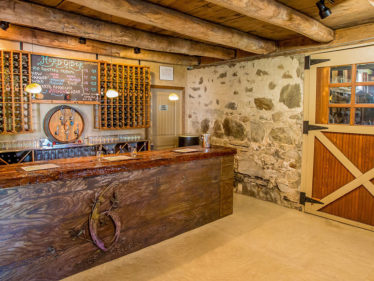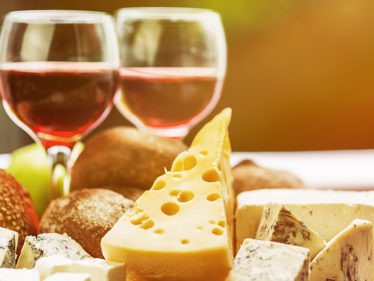The Seven S’s of Tasting
Wine is one of the most complex subjects to study. So wine tasting can seem like a daunting ordeal with a multitude of terminology and options available. Don’t be overwhelmed though. By following some easy guidelines and studying some common patterns you can navigate the world of wine with ease.
See
Hold your glass to the light and look through the wine. The color of the wine will give away some basic secrets to the wine and will help guide you for the rest of the steps. Darker wines tend to be more bold and heavy than lighter wines which are more crisp and refreshing.
Swirl
Air is beneficial for a wine. Proper aeration of wine helps to improve flavor by increasing the amount of scent produced. Swirling the glass (Not too hard! Don't spill!) will infuse air into the wine and allow scent molecules to leave the liquid and enter the air in the glass.
When wine coats and drips down the inside of the glass it is known as “legs”. Higher alcohol levels cause more legs then lower alcohol and a sweeter wine has thicker and slower dripping legs (like syrup).
Smell
Generally, you want to avoid sticking your whole nose into the glass. Start by putting just one nostril in and taking a slight sniff. Try to see what smells it reminds you of. But remember: There. Is. No. Wrong. Answer! Everyone will smell something different or have different words to explain the same smell. One person may describe a wine as “oaky”, while someone else may say it makes them think of “shop class”, or even “camp fire” for a smokey smell. A lot of your terms will be based on memories or experiences.
For White Wines, look for White Fruits: lemon, lime, orange, grapefruit, pineapple, peach, pear, and apple. For Red Wines, look for Red Fruits: cherry, blueberry, plum, blackberry, raspberry. Most of the time, look for those and you will find some. Wines can also have Floral notes (like rose, hibiscus, violet), Herbs and Veggies (like cut grass, oregano, bell peppers), Spice (like black pepper, liquorice), Woody (oaky, coffee, nutty, smokey), and so many many many more!
Sip
Take your first sip of the wine. Swish it around in your mouth, and then swallow it. Just ignore this first sip. It tells you nothing about a wine. This is to coat your mouth and prepare for the wine. Don't take too much wine, as you need three sips to really experience what it has to offer.
Slurp
Take your second sip, and this time purse your lips and suck some air into the wine, or slurp. Don't be over the top with this so the whole winery can hear. You just want enough to get some air into the wine and really open it up. Move it around in your mouth, chew it, play with it. Start looking for different flavors. As with smell, with red wines look for red fruits, white wines seek out white fruits. There are no right or wrong answers, this is a personal experience. Eventually you will start learning certain grapes tend to have certain flavors, like Riesling has apple, Chardonnay has citrus.
Savor
Take your third sip and just enjoy it. This is the time to think of what meal to have it with, what special occasion to serve it at, who would want this as a gift, and if this is a wine that you want to purchase – the whole bottle.
Spit!
It’s okay to spit the wine after you taste. The point of tasting isn't to get drunk, it’s to try new wines, learn, and know if you want to purchase it. Ask a staff member for a bucket and they will be happy to oblige.



